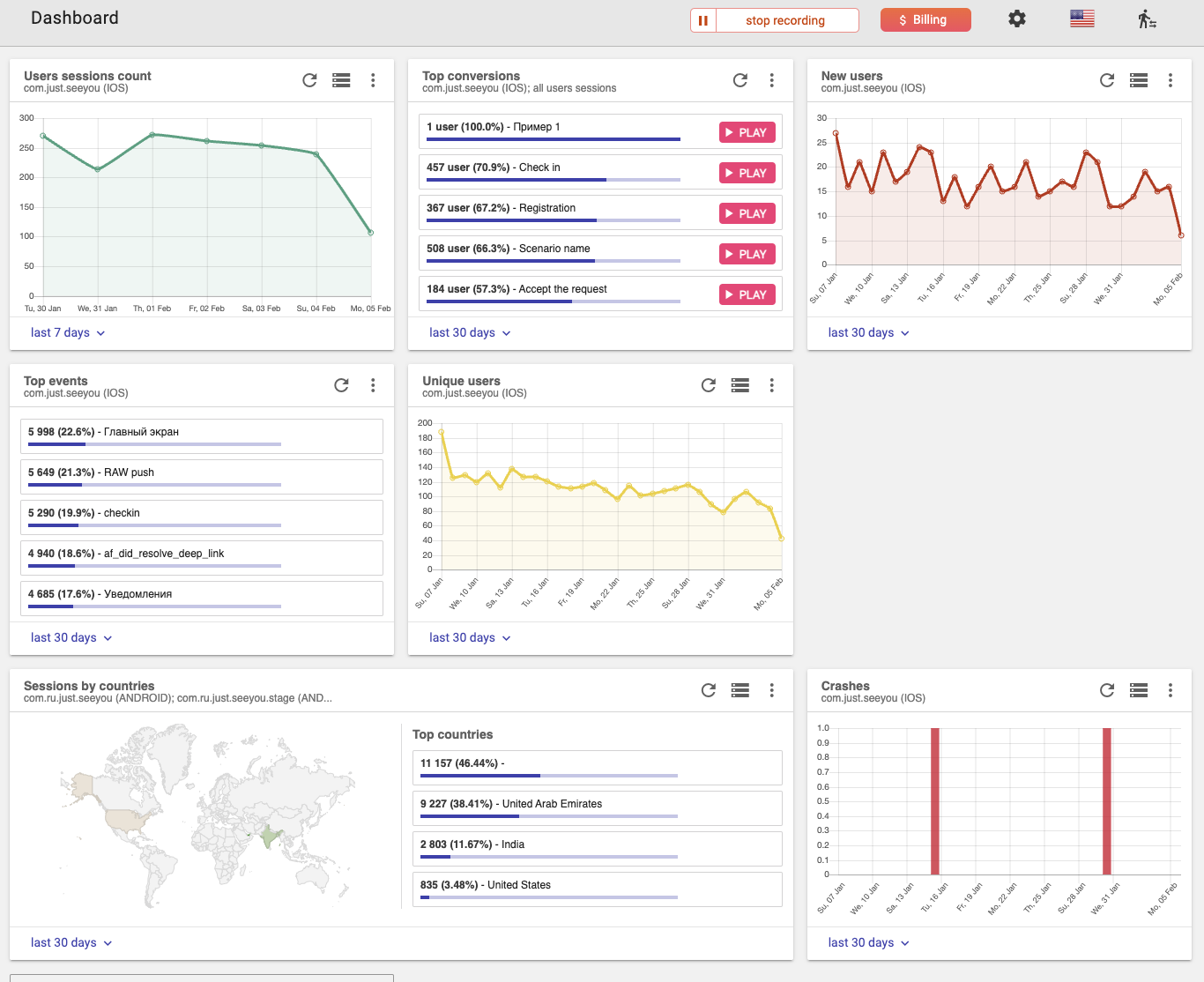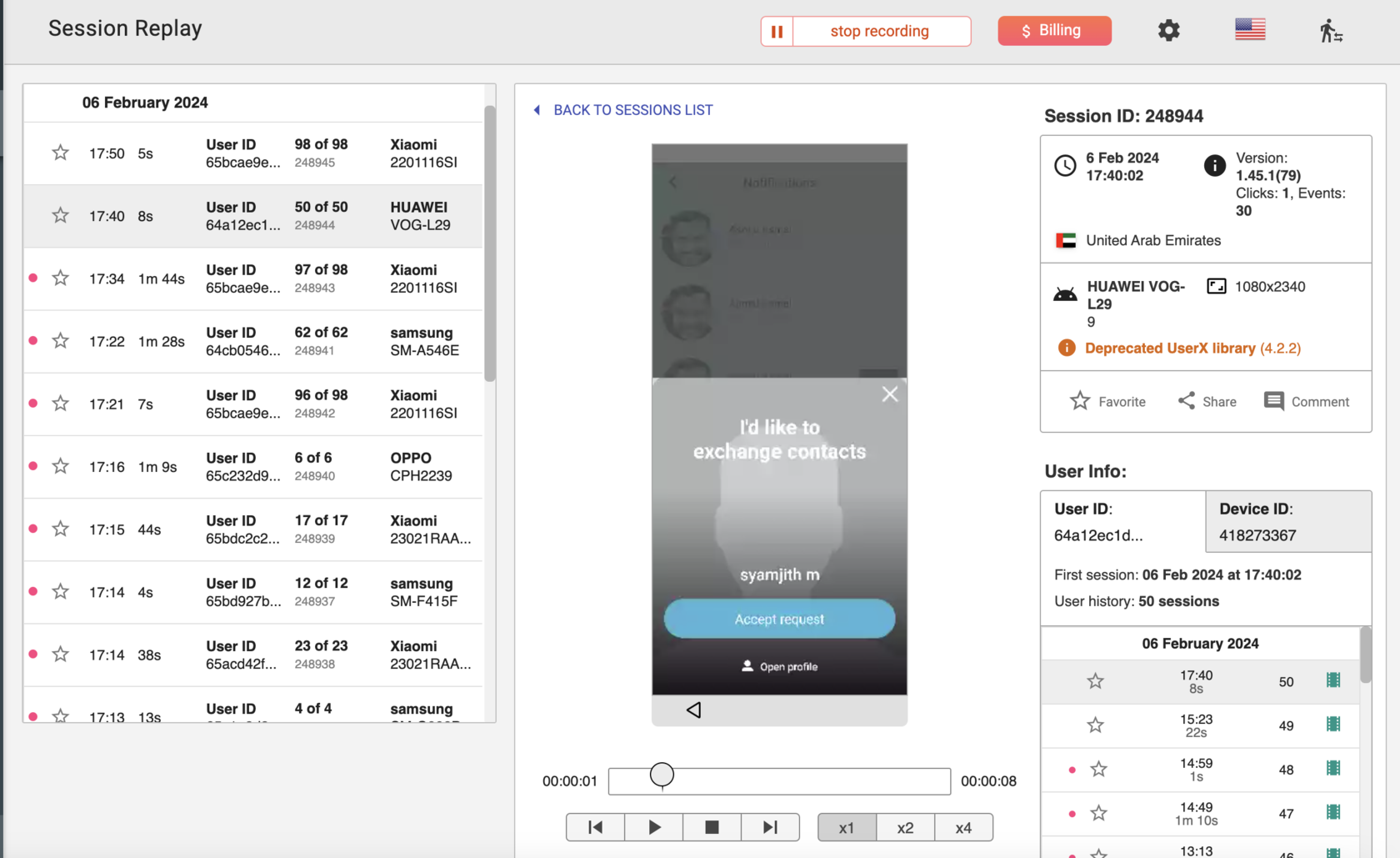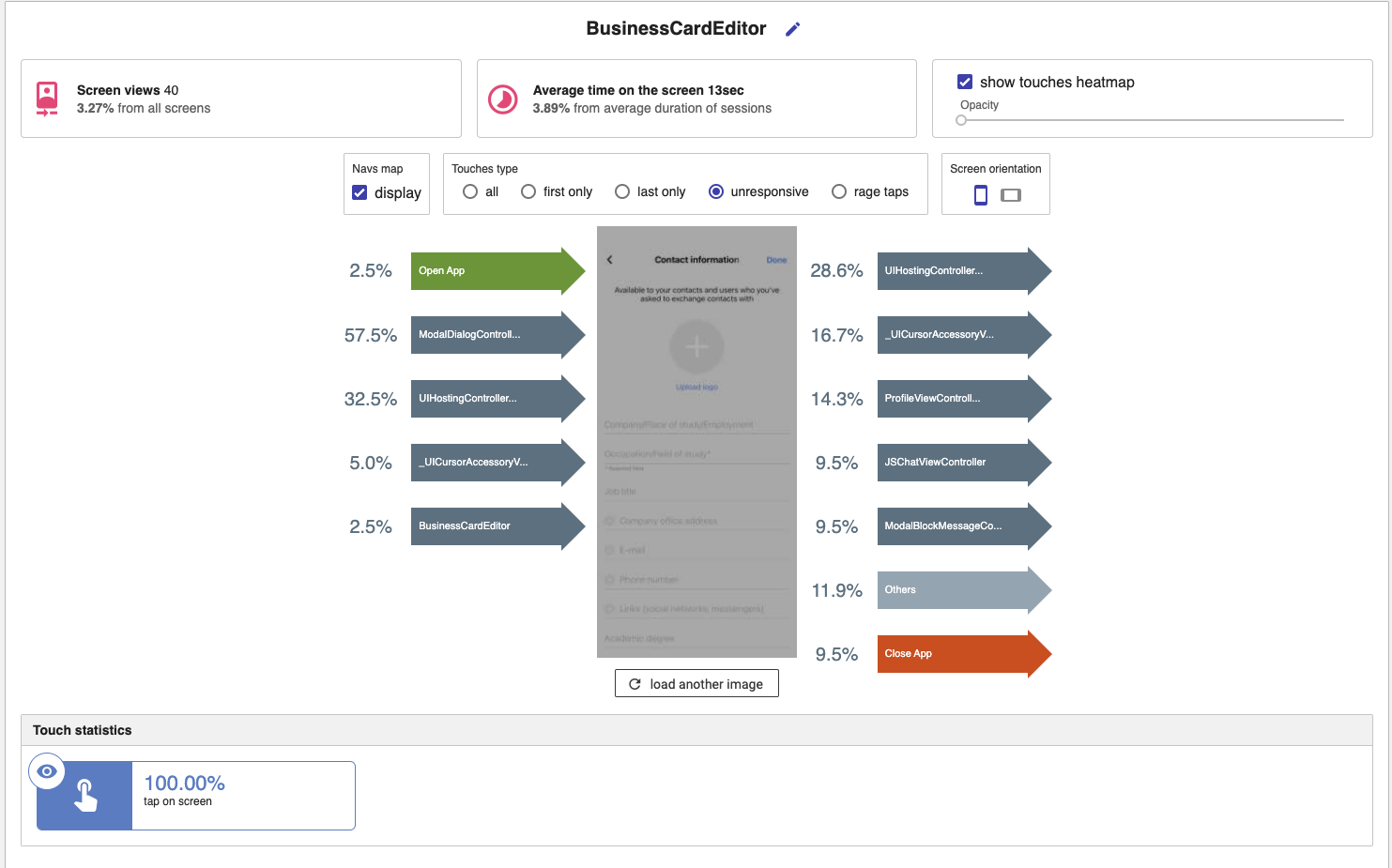In today's world, over 3.5 billion people use smartphones and interact with millions of apps every day. This makes the user experience (UX) incredibly important. Statistics show that 25% of apps are only used once because of poor UX, proving that good UX can significantly increase user retention. In fact, apps with optimized UX can see up to a 50% increase in retention rates, clearly linking UX optimization to the success of an app.
UX optimization means making an app as efficient, effective, and enjoyable as possible for the user. This involves more than just making the app look good. It's about making it easy to navigate, fast to load, and tailored to meet user needs. With the rise of mobile-first design, it is importnat to optimize functionality in app development.
By focusing on user experience optimization, developers and designers can do more than just improve how an app works. They can also increase engagement, satisfaction, and the overall success of their app in a competitive market.
UX optimization means making an app as efficient, effective, and enjoyable as possible for the user. This involves more than just making the app look good. It's about making it easy to navigate, fast to load, and tailored to meet user needs. With the rise of mobile-first design, it is importnat to optimize functionality in app development.
By focusing on user experience optimization, developers and designers can do more than just improve how an app works. They can also increase engagement, satisfaction, and the overall success of their app in a competitive market.
UX optimization is the process of improving an app to make sure it meets the needs of its users in the best possible way. It plays a crucial role in making users happy and satisfied with the app. Essentially, UX optimization is about making an app easy to use, accessible to everyone, quick, and visually appealing. These components ensure that users not only download the app but also continue to use it over time.
- Usability means making the app easy to navigate and use. An app with good usability guides users through its features without confusion or frustration.
- Accessibility ensures that everyone, including people with disabilities, can use the app. This involves designing the app so that users with various needs can enjoy it.
- Efficiency refers to how quickly and effectively users can achieve their goals within the app. An efficient app saves users time and effort.
- Aesthetic Appeal is about the look and feel of the app. A visually appealing app can draw users in and provide a more enjoyable experience.
As technology advances and user expectations grow, UX practices continue to evolve. What was considered a good user experience a few years ago may not meet today's standards. This constant evolution means that UX optimization is an ongoing process. It's not just about making the app work well but also about anticipating and meeting new user needs as they arise.
By focusing on UX optimization, developers and designers are committing to a process of continuous improvement. This approach not only enhances the end-user experience but also contributes to the overall success of the app.
Optimizing the user experience (UX) is essential for any mobile app's success. Here’s a straightforward guide to make your app more user-friendly and engaging.
1. Research and Understand Your Users
The first step is to get to know your users. Understand their needs, behaviors, and the problems they face while using mobile apps. This research is key to designing an app that meets their expectations. By focusing on the user, you can ensure that your app solves real problems and enhances their overall experience.
2. Design with the User in Mind
When designing your app, always keep the user at the center of the process. Aim for simplicity to make the app easy to use. Ensure navigation is intuitive so users can find what they need without hassle.
Personalizing the experience can also make users feel more connected to your app. These principles are at the heart of UX/UI optimization and are crucial for creating an app that users love.
3. Implement Responsive and Adaptive Design
Your app should look great and function well on any device, regardless of screen size. Responsive and adaptive design ensures your app provides a consistent experience across all devices. This adaptability is essential for usability and helps in optimizing discoverability UX patterns, making it easier for users to engage with your app.
4. Optimize for Load Times
No one likes to wait. Optimizing your app’s performance to reduce load times is crucial for keeping users happy. Faster load times improve the user experience and can significantly impact user retention. Small optimizations can lead to big improvements in how users perceive and use your app.
5. Conduct Usability Testing
Finally, test your app with real users to identify any issues or areas for improvement. Usability testing allows you to gather feedback on how users interact with your app and what changes can enhance their experience. This step is critical in the UX optimization process, as it provides direct insights into how your app performs in real-world scenarios.
By following these steps and focusing on UX/UI optimization, you can significantly enhance the user experience. Remember, the goal is to make your app not only functional but also enjoyable for users. Usability, discoverability, and optimized performance are key to achieving this.
Creating an app that users love is just the beginning. Keeping the user experience (UX) positive over time requires ongoing effort. Here are some best practices to ensure your app continues to meet and exceed user expectations.
Regular Updates Based on User Feedback
Listening to your users is crucial. Regularly update your app based on the feedback you receive to fix issues and add requested features. This shows users that you value their input and are committed to improving their experience. Regular updates are a key part of experience optimization, ensuring your app stays relevant and user-friendly.
Conduct A/B Testing
A/B testing is a powerful tool for optimizing UX. By testing different versions of your app’s features with real users, you can see which options perform best. This data-driven approach allows you to make informed decisions that can significantly enhance the user experience.
Keep Up with UX Trends
The world of UX is always evolving. Stay informed about the latest trends and technologies in UX design to keep your app modern and engaging. Implementing new design principles and technologies can help you maintain a competitive edge and keep users interested in your app.
Prioritize Accessibility and Inclusive Design
An accessible app reaches a wider audience, including users with disabilities. By focusing on accessibility and inclusive design, you ensure that everyone can use your app, regardless of their abilities. This not only expands your user base but also demonstrates your commitment to providing a positive experience for all users.
Use Analytics and User Feedback Tools
Analytics and user feedback tools are essential for measuring UX effectiveness. These tools can provide valuable insights into how users interact with your app and where they encounter problems. By analyzing this data, you can identify areas for improvement and make targeted changes to enhance the UX.
Following these best practices for UX optimization is an ongoing process that requires attention and dedication. By continually focusing on improving the user experience, you can ensure that your app remains a favorite among its users.
UserX is a powerful tool that specializes in UX optimization for mobile apps. It helps developers and designers enhance app performance, making apps more user-friendly and efficient.

How UserX Enhances UX Optimization
UserX provides detailed analytics and insights that are crucial for understanding how users interact with an app. By analyzing user behavior, UserX identifies areas where the app's usability can be improved. This data-driven approach allows for precise tweaks and adjustments, directly enhancing the user experience.
Gathering Actionable Insights
One of the key strengths of UserX is its ability to gather actionable insights. This means not just collecting data but also providing clear, actionable steps that can be taken to improve app performance. Whether it's simplifying navigation, speeding up load times, or making an interface more intuitive, UserX offers concrete suggestions for enhancement.

Improving App Usability
With UserX, optimizing app usability becomes a targeted and straightforward process. The platform's tools and features are designed to highlight usability issues, from minor glitches to major navigational challenges. By addressing these issues, apps become more accessible and enjoyable for users, leading to increased engagement and satisfaction.
Book a demo and try UserX for free:
Enhancing Overall User Experience
UserX's comprehensive analysis tools also play a crucial role in enhancing the overall user experience. By focusing on the user's journey from start to finish, UserX ensures that every aspect of the app is optimized for the best possible interaction. This holistic approach to UX optimization ensures that users have a positive experience every time they use the app.

By leveraging UserX for UX optimization, app developers, marketers and designers can ensure their apps not only meet but exceed user expectations. The platform's ability to provide detailed insights and actionable steps makes it an invaluable tool for anyone looking to optimize app performance and enhance the user experience.
In summary, UX optimization plays a vital role in the success of any app. By focusing on enhancing the user experience, developers and designers can significantly increase user engagement, satisfaction, and retention. Throughout this article, we've explored various strategies for UX optimization, including understanding user needs, implementing responsive design, and utilizing analytics for continuous improvement.
Experience optimization is not just about making an app look good; it's about creating a seamless, intuitive, and enjoyable experience for users. This ongoing process is essential for any app aiming to stand out in a competitive market.
For those looking to take their app's UX to the next level, exploring tools like UserX can be a game-changer. With its ability to provide actionable insights and facilitate usability improvements, UserX is an invaluable resource for any UX optimization effort. To see how UserX can transform your app's user experience, consider starting with free trial or book 1-1 demo.
Related Content
UserX Tools for Better UX
1. What is UX Optimization and Why is it Important for Mobile Apps?
UX optimization refers to the process of enhancing the user experience of a mobile app to make it more effective, efficient, and enjoyable for users. It's crucial for mobile apps because it directly impacts user satisfaction, engagement, and retention rates. By focusing on UX optimization, developers can ensure their apps meet user needs and expectations, leading to increased app success.
2. How Can User Research Enhance Mobile App UX?
User research is a foundational step in UX optimization that involves gathering insights about the app's target audience, including their needs, behaviors, and pain points. By understanding the users deeply, developers can design and optimize the app in a way that directly addresses user requirements, significantly enhancing the overall user experience.
3. What Role Does Responsive Design Play in UX/UI Optimization?
Responsive and adaptive design ensures that a mobile app provides a consistent and seamless experience across various devices and screen sizes. This approach is key to UX/UI optimization as it improves usability and accessibility, making the app more appealing and easier to use for a broader audience, regardless of the device they use.
4. Why is Usability Testing Critical for Enhancing User Experience?
Usability testing allows developers to identify any issues or areas for improvement in the app by observing real users as they interact with it. This feedback is invaluable for refining the UX, fixing problems, and making informed decisions that boost app performance and user satisfaction.
5. How Can Analytics and User Feedback Tools Improve App Performance?
Analytics and user feedback tools provide quantitative and qualitative data on how users interact with the app, highlighting what works well and what doesn't. By analyzing this information, developers can make targeted adjustments to optimize app performance, enhance user experience, and maintain a positive user experience over time.



